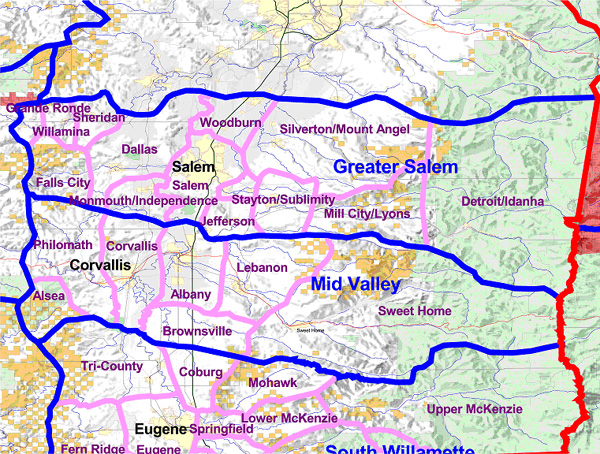Human Resource Units (HRU)
Community Resource Units
Human Resource Units
Social Resource Units
Cultural Resource Units
Global Resource Units
Back to Human Geographic Mapping
Human Resource Units are larger and encompass a number of Community Resource Units within them. Rather than a perception of personal ownership, as is the case in Neighborhood Units, people at the Human Resource Unit level have more of a perception of ownership as a group, i.e., "our open space."
A sense of place; a sense of identity with the land and the people; a sense of a common understanding of how the resources of their Unit should be managed; and a common understanding of how things are normally done characterize this territorial level.
Human Resource Units are characterized by frequent and customary interaction. People's daily activities occur primarily within their HRU including work, school, shopping, social activities and recreation. Health, education, welfare and other public service activities are highly organized at this level with a town or community almost always as its focal point.
The regularity of interaction within an HRU reinforces recognition and identification by the residents of natural and man-made features as "home". Because of this familiarity, boundaries between Human Resource Units, as with Neighborhood Resource Units and Community Resource Units, are clearly defined in the minds of those living within them.
Human Resource Units aggregate to form Social Resource Units in the Natural Borders mapping system.
Map of the HRU: Greater Salem, Oregon

Cobalt Web Designs